|
|
|
|
Our History
A Union is Born
The Turbulent Years
The Conspiracy Trials
The Beginning of the
Morrin Era
The Depression and a New
Deal For Labor
World War II
Ironworkers Grow in the
1950's Part Two Part Three
John H. Lyons Jr.
Elected President
The Tradition Continues
Pathways to the 21st
Century Under The Leadership of General President Jake West
|
Part Four
In His report to the 25th Convention Delegates President Morrin stated that "in spite of the unemployment condition we were successful in increasing our total membership for the four year period ending June 20, 1936 to 17, 222 members or a gain of 2, 718 members during the period. When it is taken into consideration that the depression continued severely during the first three years, I consider that we have made good progress as it has only been during the past year that our members have become fairly well employed." While Iron Workers had agreed at the worst time in the depression to take less wages (an average of 15.9% in cuts) hoping that this would help the situation, it had only made things worse. In 1936, the convention felt that the work week should be shortened and wages go up. They were hoping for the passage of the Black Bill which mandated a "thirty-hour week." The officers of the Union had also taken a 20% pay cut by putting that amount into the Pension and Death Benefit Funds. But even then these funds were being depleted and changes were made. By 1936 things were better. The International launched a campaign to organize the shopmen in the bridge, structural steel and ornamental shops, but they had to fight the big steel companies that feed propaganda to the workers in these shops. General President Morrin determined that shop ironworkers needed a different dues schedule since wages were low. He pointed out that the International laws, constitution, regulations, initiation fees, per capita tax and benefits, as well as rules, were all designed for those engaged in field and construction work. General President Morrin recommended to the delegates attending the 25th Convention that a conference for Shop Representatives be held in order to discuss Constitutional changes relative to shop Ironworkers. The delegates concurred with President Morrin's recommendation and unanimously adopted Resolution No. 25 which authorized the International Association to hold such a conference. Then came the CIO which also wanted to organize the shopmen. Morrin wrote letters protesting to John L. Lewis of the CIO, M. F. Tighe, President of the Amalgamated Association of Iron, Steel, and Tin Workers, and to A. F. of L President William Green. At a Conference held for 150 General Organizers and Special Representatives, the International Association decided to challenge the CIO and agreed to launch a campaign to organize shop workers beginning April 1, 1937. General President Morrin stated "While there has never been a let-down in our organizing work, both among the structural workers and in the fabricating shops, we are confident that the time has now arrived for an intensive campaign to organize the 75, 000 or more men employed in fabricating shops all over the country, and it has been decided to send 100 organizers into this field. These organizers are bona-fide members of our International Association and the only aid we expect from outside of our own ranks will be the assistance that has been volunteered to us by William Green, President of the American Federation of Labor; John P. Frey, President of the Metal Trades Department, and James W. Williams, President of the Building Trades Department. By the end of April, fifty shop locals were chartered and by the end of July the number grew to seventy-two. The campaign was later extended to the end of the year. In January, 1938 the organizing campaign was going so well it was extended for six more months. Morrin reported that, "It was decided to spend approximately 750,000 dollars to carry out the program."
NATIONAL APPRENTICESHIP LAW IS ENACTED
The Fitzgerald Act of 1937 set the pattern for today's system of Federal Government assistance in Apprenticeship programs. The Federal Committee on Apprenticeship was organized to include equal representation of employers, labor and public members. The Apprentice Training Service (now the Bureau of Apprenticeship and Training) was established as the national administrative agency in the Department of Labor to carry out the objectives of the law, guided by the recommendations of the Federal Committee on Apprenticeship. General Vice President Raymond J. Robertson was appointed by three Secretaries of Labor (Elizabeth Dole, Lynn Martin and Robert Reich) to serve on the Federal Committee on Apprenticeship. He was elected as Labor Vice Chairman of the Committee and in 1996 he is still serving in that capacity.
THE FAIR LABOR
STANDARDS ACT This legislation passed on June 25, 1938 provided for most employees of firms engaged in producing goods for interstate commerce a minimum hourly wage, and time and one half the minimum hourly rate for all hours worked in excess of forty hours per week. The act prohibited the employment of children under the age of sixteen by industries considered to be engaged in interstate commerce.
GENERAL TREASURER JOHN
H. LYONS
In February, 1940, President Morrin advised the membership through the Bridgemen's Magazine that the Public Works Administration (PWA) was drawing to a close and urged the members to write to their Senators and Congressmen to appropriate additional monies to keep this program going. It was pointed out that over six billion dollars had been spent to provide highways, bridges, schools, hospitals, and other construction projects. Over 7,500,000 unemployed workers were given jobs under the PWA.
THE DEATH OF GENERAL
COUNSEL
Scroll to the top and click on
The Depression and a New Deal For
Labor - 1930 to 1940 - Part Five
[Home]
[Officers]
[Upcoming
Events] |
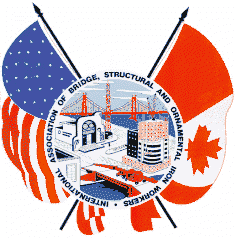
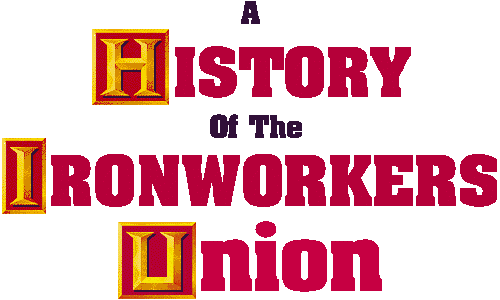
 he
Twenty-Fifth International Convention was held September 21st to the 26th,
1936 at the Jefferson Hotel in St. Louis Missouri. P. J. Morrin was
reelected as General President, W. J. McCain was reelected as General
Secretary and J. H. Lyons was reelected as General Treasurer.
he
Twenty-Fifth International Convention was held September 21st to the 26th,
1936 at the Jefferson Hotel in St. Louis Missouri. P. J. Morrin was
reelected as General President, W. J. McCain was reelected as General
Secretary and J. H. Lyons was reelected as General Treasurer.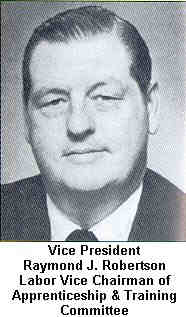 On
August 16, 1937 Congress passed the National Apprenticeship Act commonly
known as the "Fitzgerald Act". The purpose of the Act is
"to promote the furtherance of labor standards of apprenticeship...to
extend the application of such standards by encouraging the inclusion
thereof in contracts of apprenticeship, to bring together employers and
labor for the formulation of programs of apprenticeships, to cooperate
with State agencies in the formulation of standards of apprenticeship.
On
August 16, 1937 Congress passed the National Apprenticeship Act commonly
known as the "Fitzgerald Act". The purpose of the Act is
"to promote the furtherance of labor standards of apprenticeship...to
extend the application of such standards by encouraging the inclusion
thereof in contracts of apprenticeship, to bring together employers and
labor for the formulation of programs of apprenticeships, to cooperate
with State agencies in the formulation of standards of apprenticeship.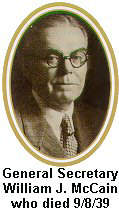 The
International Association sustained a desolating loss on Friday morning,
September 8, 1939, when the word came to International Headquarters in St.
Louis of the death of General Secretary William J. McCain. Inasmuch
as the General Executive Board was in session in St. Louis from September
12 to 18, 1939, after having returned from Brother McCain's funeral,
President Morrin decided it would be best to fill the vacancy at
once. After giving the matter full consideration, President Morrin
appointed General Treasurer Lyons as General Secretary (effective on
October
The
International Association sustained a desolating loss on Friday morning,
September 8, 1939, when the word came to International Headquarters in St.
Louis of the death of General Secretary William J. McCain. Inasmuch
as the General Executive Board was in session in St. Louis from September
12 to 18, 1939, after having returned from Brother McCain's funeral,
President Morrin decided it would be best to fill the vacancy at
once. After giving the matter full consideration, President Morrin
appointed General Treasurer Lyons as General Secretary (effective on
October 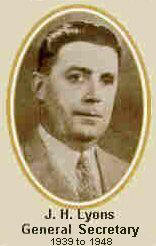 1,
1939) President Morrin appointed John J. Dempsey, who had been the
business agent of Local No. 44, Cincinnati, Ohio for ten years as General
Treasurer to replace J. H. Lyons.
1,
1939) President Morrin appointed John J. Dempsey, who had been the
business agent of Local No. 44, Cincinnati, Ohio for ten years as General
Treasurer to replace J. H. Lyons. Frank
P. Walsh, the first General Counsel for the Iron Workers died on Tuesday,
May 2, 1939 at the age of 75. President Morrin said "The
International Association in particular and the American Labor Movement in
General has suffered through his passing, the loss of a man whom I firmly
believe did more during his lifetime to advance the cause of the working
man than any other outside of the Union Labor Movement itself. Mr.
Walsh served the International for almost twenty years. Frank Walsh
was appointed by President Wilson to serve as chairman of the United
States Industrial Relations Commission. He served on the War Labor
Board as joint chairman with former President William H. Taft."
Frank
P. Walsh, the first General Counsel for the Iron Workers died on Tuesday,
May 2, 1939 at the age of 75. President Morrin said "The
International Association in particular and the American Labor Movement in
General has suffered through his passing, the loss of a man whom I firmly
believe did more during his lifetime to advance the cause of the working
man than any other outside of the Union Labor Movement itself. Mr.
Walsh served the International for almost twenty years. Frank Walsh
was appointed by President Wilson to serve as chairman of the United
States Industrial Relations Commission. He served on the War Labor
Board as joint chairman with former President William H. Taft." After
the death of Frank Walsh in 1939, General President Morrin retained Harold
Stern, born July 20, 1902 in New York City. He was admitted to the
New York Bar on October 9, 1924. In 1925 General Counsel Frank
Walsh invited Mr. Stern to join him in his law practice. Through his
association with Mr. Walsh's law firm, Harold Stern began to work for the
Iron Workers. during his long and distinguished career as an
attorney, Mr. Stern exclusively represented labor unions. In
addition to representing this International Association, he represented
many of the Building Trades Unions in the New York City area and, in
particular, Local Union No. 3 of the IBEW. One of his greatest
accomplishments was his role in the Alan Bradley case which he tried
before the United States Supreme Court and is recognized as a landmark
decision in law school textbooks. After a long and distinguished
career, Mr. Stern was forced to retire on October 1, 1982 due to ill
health and on November 27, 1983 he died at the age of 81.
After
the death of Frank Walsh in 1939, General President Morrin retained Harold
Stern, born July 20, 1902 in New York City. He was admitted to the
New York Bar on October 9, 1924. In 1925 General Counsel Frank
Walsh invited Mr. Stern to join him in his law practice. Through his
association with Mr. Walsh's law firm, Harold Stern began to work for the
Iron Workers. during his long and distinguished career as an
attorney, Mr. Stern exclusively represented labor unions. In
addition to representing this International Association, he represented
many of the Building Trades Unions in the New York City area and, in
particular, Local Union No. 3 of the IBEW. One of his greatest
accomplishments was his role in the Alan Bradley case which he tried
before the United States Supreme Court and is recognized as a landmark
decision in law school textbooks. After a long and distinguished
career, Mr. Stern was forced to retire on October 1, 1982 due to ill
health and on November 27, 1983 he died at the age of 81.